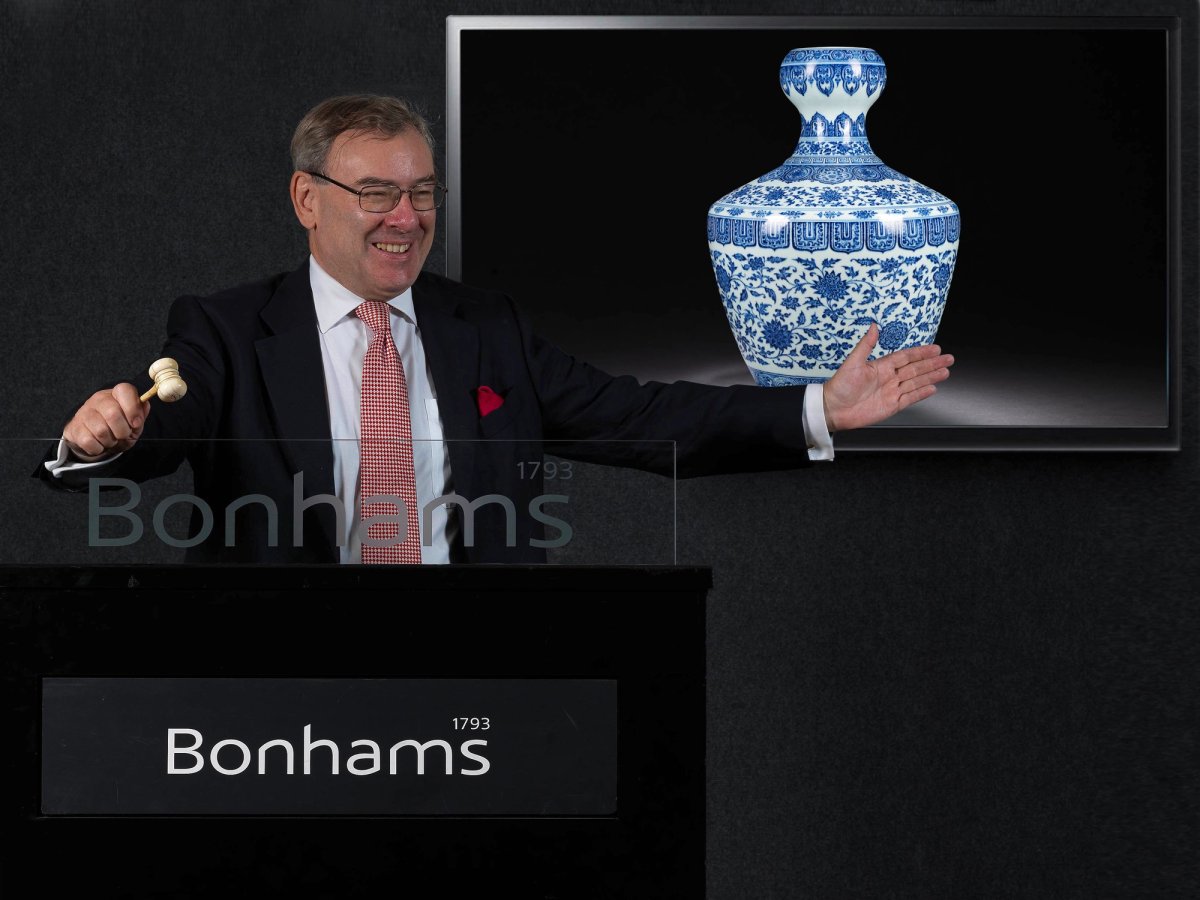Colin Sheaf had his first interview with Christie’s at the age of 13, a meeting that would set his path for the next 50 years.
He started on the reception desk at Christie’s in King Street after university, before becoming a globetrotting Asian art specialist, first for Christie’s then for Bonhams.
After 21 years, Sheaf is scaling back to one day a week at Bonhams and he reflects on how the art world—especially in connection with China—has changed in that time and what lies ahead.
“The market has changed so dramatically over the years, especially with the re-emergence of Chinese-speaking Asians as collectors, both in mainland China post-Deng Xiaoping, and around the worldwide Chinese diaspora. Almost all the top-level activity in my world has shifted eastwards to Asia, where most of the end users are now based.”
Sheaf tracks the market starting with the dominance of a new generation of collectors in Hong Kong in the 1970s. Many were former Shanghai businessmen who escaped from the mainland in 1951, when they were finally forced to abandon their homes and businesses as a result of the 1949 Communist victory, and remade their fortunes in property development. In the 1980s the Taiwanese white goods entrepreneurs became big collectors in Taipei. Then, in the noughties, Mainland buyers emerged with a considerable hunger for classic Chinese works of art.
“It is the auctions in Hong Kong since the 1970s which have driven this market,” Sheaf says. “The sale composition still remains highly influenced by the traditional preferences of pre-1949 Shanghai collectors for grand Imperial porcelains and brightly-coloured jades, not for the more literary and archaeological tastes of pre-Revolutionary Beijing.”
He thinks Hong Kong’s dominance of the Asian auction market will continue, despite increasing control from Beijing and the crackdown on freedom of expression since the introduction of the National Security Law in 2020. “[Hong Kong’s] enormous commercial significance for the global market for Chinese art and jewellery remains the result of its role as the greatest freeport in Asia, and the fact that Hong Kong art auctions are held under terms and conditions essentially established by the two leading Western auction houses some 40 years ago, and bolstered by being subject to Hong Kong’s current legal jurisdiction,” Sheaf says. “These are powerful protections for the art auction industry in Hong Kong, and help to explain its meteoric growth from the 1980s.”
In 1986, the high-profile “shipwreck cargo” sale at Christie’s in Amsterdam drew global attention to Chinese art. Sheaf oversaw the auction, which sold off the cargo of the VOC ship De Geldermalsen, which sunk off the coast of Indonesia in 1752 and was salvaged by the British marine explorer Michael Hatcher in 1986 (the sale sparked some controversy as some said Hatcher had tampered with an archaeological site).
“It was an important moment for the market,” Sheaf says. “The five-day ‘Nanking Cargo’ sale was the biggest and most successful auction of any kind of decorative art in 1980s. Nowadays, I think there would be a greater focus on how the contents recovered from a sunken ship were presented to the public. In 1986, the history and romance of the shipwreck story, and the objects themselves, made the 2,800 lots hugely desirable.”
Today’s global market for Chinese works of art brings greater price stability at auction across the board, he argues, as has market globalisation in general.
What else has changed?
“The fascination with provenance is new and that’s because so many new collectors don’t have the perspective and knowledge that old collectors did, and knowing an item’s provenance history provides that reassurance.”
Sheaf sees the increased accessibility of the market and its more objective approach to trading as a positive step: scientific analysis of objects and the growing importance of provenance, compliance and due diligence. “It’s much more important to do your homework.”
He expects this trend to continue. “My personal view is that forensic science will play an increasingly important part in validating works of art. It may not be the ultimate authenticator, but it will provide reassuring back-up for a wide range of objects.”
Digital technology has helped democratise the market, level up prices and improve transparency, Sheaf argues, while trading online has become second nature to young people already, so it will prove less of a leap for them to transfer their interests to the art market which evidence suggests is already happening.
He also foresees a move back towards traditional areas of collecting. “I think some future collectors will realise how extraordinary ‘heritage’ disciplines really are—whether Renaissance bronzes or great silver and furniture, all are relatively underrated, side-lined by the vogue for contemporary art. As people rediscover the attractions of a connoisseurial approach, I can see them making a comeback.”
His own future is more clear cut. While continuing to consult with Bonhams for a day a week, he will transfer his focus among other activities to the Sir Percival David Collection, the world’s pre-eminent collection of Chinese porcelain, established as a charitable foundation on loan to the British Museum. Sheaf is its chair.
“We actively sponsor activities from our endowment fund, such as exhibitions, videos and books, and I would love to think we would widen the scope of things that we sponsor which relate to the culture and art of the Asian region.”



